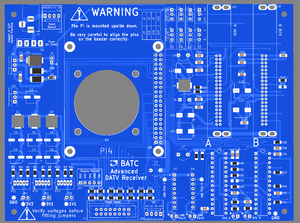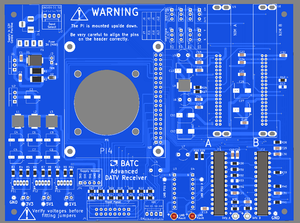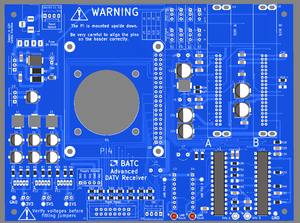Winter Hill receiver project
Winter Hill
The Winter Hill receiver project by Brian G4EWJ with hindrance occasional help from Mike G0MJW. It uses the BATC Advanced receiver hardware.
The software will run on the Raspberry Pi4 desktop environment providing a multi-channel receiver capable of receiving up to four channels simultaneously.
Timeline
December 2020 - Currently the project is at the design phase with a proof of concept receiver working on breadboard hardware.
February 2021 - beta testing in progress
March 2021 - First production PCBs expected
Hardware
The PCB design by Mike G0MJW is based on a completely new concept, BATC Advanced DATV Receiver, supporting two SERIT tuners with an integrated Raspberry PI4 and PICs. No USB module is required. This supports 4 simultaneous receivers in either a set top box mode, with the PI desktop, or headless, or a combination of these.
Version 0.1
Feasibility design which worked fine
Version 0.2
A prototype that was also built by several beta testers.
Version 1
First general release PCB - Likely release March 2021
Software
TBD
Hardware Build
Schematic is here:
BOM is here:
It is best to build this in order of component height. It took the author about 3 hours. There is an old proverb, a man with a watch knows the time. A man with two watches is never sure. While working with SMT, if you make a mistake, having two soldering irons to had is a great help when removing misplaced components. The other essential trick is to have the right tools for the job, a fine tip iron and thin, ideally 0.3mm solder. With experience you can use bar solder and a poker, but you are on your own there. Plenty of light and magnification is a must. If you don't have a magnifier then some +2 or +3 reading glasses might help those with normal vision.
Starting with an unpopulated PCB fit all the parts shown, Resistors, Ceramic capacitors, Diodes, Inductors:
Next fit the 2 PICs and 4 LEDs - ideally use IC sockets for the PICs.
Next fit the Electrolytic capacitors
Now fit the pin headers and fuse holder


